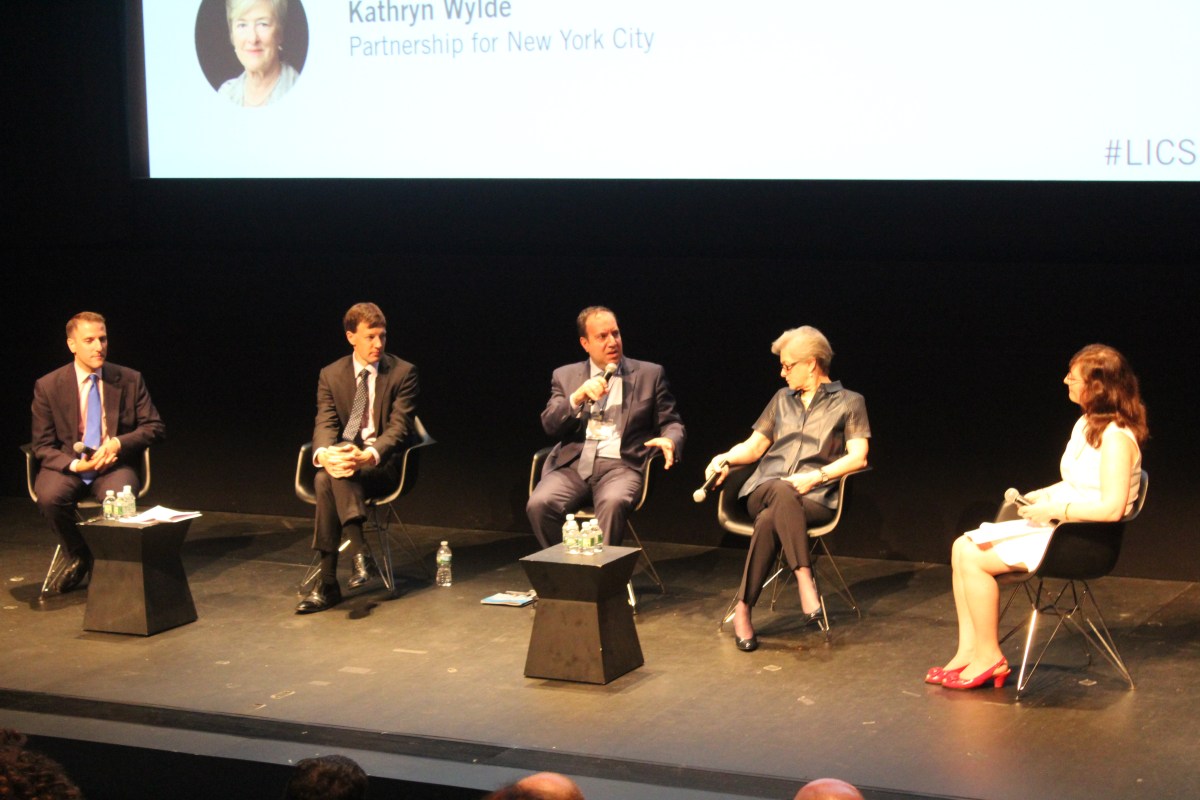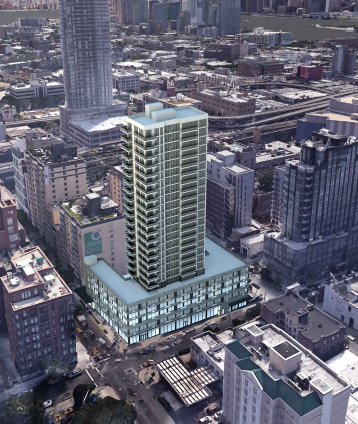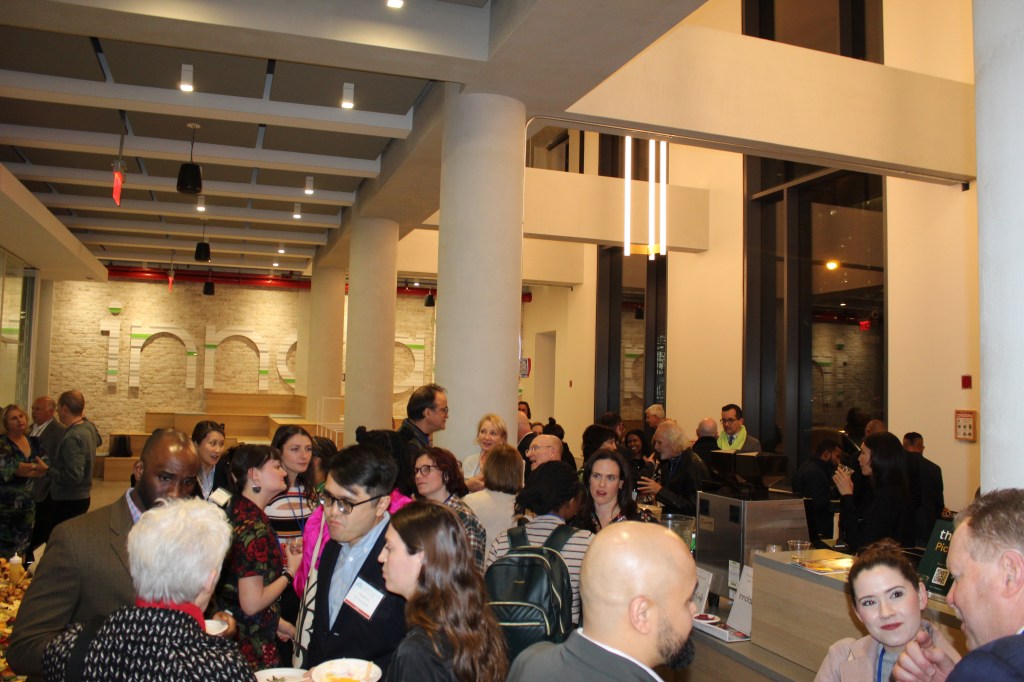Leaders in real estate, business and government attended the fourth annual LIC Summit on June 20 to discuss the future of Long Island City’s growth.
Hosted by the LIC Partnership at the Museum of the Moving Image, the event brought together stakeholders to discuss how to maintain the neighborhood’s mixed-use identity.
Seth Pinsky, executive vice president of RXR Realty, said Long Island City is the “only truly mixed-use neighborhood in New York City.”
Pinsky was joined on the panel by Kathryn S. Wylde, president and CEO of Partnership for New York City; James Patchett, president and CEO of the NYC Economic Development Corporation; and Carlo A. Scissura, president and CEO of New York Building Congress.
“I live in Brooklyn, and much of Brooklyn feels like a victim of its own success and I think you got ahead of that more than any other community in the city by getting organized early, planning early, paying attention to what was going on,” Wylde said. “So I think we all owe you [LIC Partnership and residents] a lot for that because I think this is a model for how we can support economic change and growth in a constructive, positive way.”
The majority of the panel was focused on how the private sector and government could work together to foster the mixed-use character of Long Island City. Most of the new buildings cropping up in the neighborhood have been apartments and condos. According to a recent report, a record number of rental units were built in Long Island City from 2010 through 2016, eclipsing other large cities nationwide that also experienced a spike in development.
The incentives given to developers who build residential units is partly to blame for the record rise in residential units and lack of commercial or retail space, the panel argued. Patchett pointed out that two large, city-owned developments will be leased out to mostly commercial tenants.
A 1.5 million-square-foot, mixed-use development at 1 Gotham Center will attract commercial tenants, and two sites on 44th Drive and Vernon Boulevard that offer 1.4 million buildable square feet will also attract developers looking to bring in commercial office space.
“We’re putting our thumbs to the scale to encourage more office development particularly in places like Long Island City, which are located so close to the core of Manhattan,” Patchett said.
Developers on the panel also called for a change in tax policies for those looking to build commercial, retail or manufacturing. The implementation of 421-a or Affordable New York grants tax breaks to developers building affordable housing, but there aren’t equivalent programs for buildings with other uses.
“I think we have to use all of these tools together,” Patchett said. “If you are bold enough to build a new office building in Long Island City, you do receive a tax cut [but] we’re still not seeing a lot of new [commercial space] without specific city intervention.”
Pinsky argued that to make sure that Long Island City remains a mixed-use community, developers must build more, and must also keep spaces zoned for manufacturing.
“In a city where we have growing inequality, something that the mayor has underlined and emphasized, one of the reasons we have growing inequality is because we don’t have those pathways to the middle class that existed in the past.”
He added that manufacturing jobs provide good wages to people who may not have a formal education. Pinsky also said the industrial sector “is what allows the city to function.”
“If we want to build skyscrapers, the cement has to come from somewhere,” he said. “If we want to have restaurants in Long Island City that everyone from all over the world wants to come to, the food has to come from somewhere.”
In the “Retail as Placemaking” panel business owners and developers spoke about the dearth of retail in Long Island City and how they expect that to evolve in the next few years.
Donna Drimer, owner of the art gallery and gift shop Matted LIC, moved into the neighborhood eight years ago. Though the growth in residential units has helped her business, she said the lack of retail stores near Matted LIC have been disappointing.
Located at 46-36 Vernon Blvd., Drimer said two retail stores closed on the block, which makes Matted the only shop.
“I’m the only destination,” she said. “There is no place else to go shopping, so rather than coming to me, it’s a lot easier to hop back on the 7 and go into Grand Central and go wherever to go shopping.”
Aaron Fishbein, director of retail real estate at Winick Realty Group, said he is hopeful about retail in the neighborhood. So far, many of the interested clients have been fitness, medical and education tenants.
He calls this the “first wave” of retail tenants and predicts that as more residential buildings attract people to the neighborhood, restaurants will move in, followed by big box stores. He added that the neighborhood “has everything it needs for retail” including transportation options and a growing number of families moving in.
“[Retailers] see the value; they see the lack of competition,” Fishbein said. “There’s a lot of interest.”
For a full list of speakers, visit the LIC Partnership website.




































